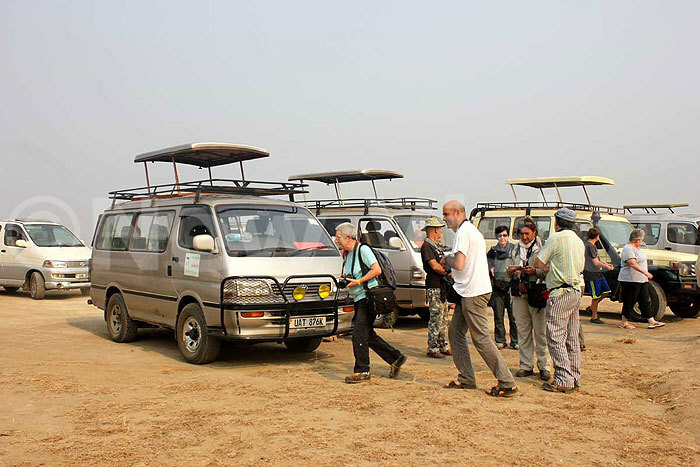Queen Elizabeth National Park has got lots more
This is what Queen Elizabeth National Park, hidden a five-hour drive away (about 400km) from Kampala city, has in store.
The image of elephants flapping their ears back and forth are embedded on my mind. Sandwiched between their tons of weight were giraffes, hippos, warthogs and naughty primates.
This is what Queen Elizabeth National Park, hidden a five-hour drive away (about 400km) from Kampala city, has in store.
The park is located in western Uganda in the districts of Kasese, Bundibugyo and Bushenyi. It can be accessed through Mbarara and Bwindi or you can get there via Ishasha, south of Bwindi National Park.
"I was the guide when President Museveni had his security visit on Kazinga Channel [at the end of last year]," recounts a Uganda Wildlife Authority (UWA) ranger Mzee Kabet with prestige.
"Did you see me on the front page of the New Vision telling him about the migrant birds, reptiles and mammals in store?"
As the boat buoys away and the engines rev louder, Kabet's talk becomes of less consequence as his passengers have their focus channeled towards the herds guzzling water, grooming or dining.
The elephants can be seen scooping liters of water and splashing their bodies with grace.
"Uganda has been so peaceful in the last 30 years," says the minister of state for tourism Godfrey Kiwanda. "You cannot believe it but butterflies, birds, gorillas and reptiles are now seeking refuge here like the population of the people from wartorn countries in the region."
He adds that it would be hard to believe that Queen Elizabath National Park, after years of political turmoil, has its numbers of animals, birds and reptiles recovering steadily.
"The tourist here gets maximum attention from the rangers and unlike the exodus of their counterparts in Maasai Mara," brags a tour operator, Derrick Waiswa.

"They get real VIP treatment in Uganda. It is not what one gets in crowded Mombasa or Maasai Mara."
UWA executive director Edward Seguya revealed that there are guests who come to see night life and enjoy the night life safaris.
"Birdwatchers have to leave here after ticking 600 species," he Seguya."Birds, gorillas, Mountain Rwenzori and water bodies are our niche. But there are lots more interesting things to indulge anybody. No country can counterfeit our attractions."
Queen Elizabeth National Park has an appeal that you cannot get anywhere else in the world. There is the sun, vegetation and variety of animals to see in their habitat. This is besides the numerous tribes with different cultures, legends and cuisines living in the area.
It is my four-year-old son Forsyth, who brought me back to reality when he asked me why the elephants do not iron their skin. Efforts to explain that they are very brilliant animals and mourn their dead, like we humnas do, did not help divert his attention. It was the appearance of girafes that did it.
"Which type of beds do giraffes go to?" came the next question from the youngster. "Which tailor patterns their skins?"
Unlike Forsyth, his agemates residing in Katwe communities do not give any animal a second thought or glance.
Talk has it about human lives that have gone lost because of fatal hippo attacks. These toddlers go mining salt in Lake Katwe and return to bath in the evening. Most of them are orphans or live with a single parent.
One thrilling thing to do is tour the curios in Queen Elizabeth National Park which are graced with hats, caps, wristbands and footwear. This is besides the face masks and statues of wild animals.
Rolex is served with tea or instant coffee at sh5000. Tourists meet here to compare notes about what they have seen or expect to see during the safari drive.
There is a variety of attractions in Queen Elizabeth National Park, comprising the salt mining community, the animals, birds, vegetation, insects and the panoramic view in place.
One needs more than two day to exhaust the menu to capacity.